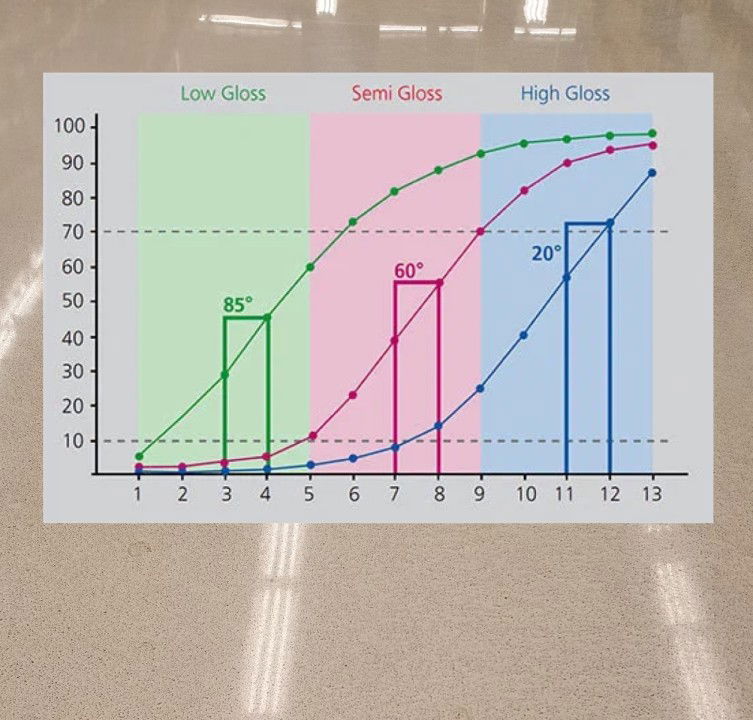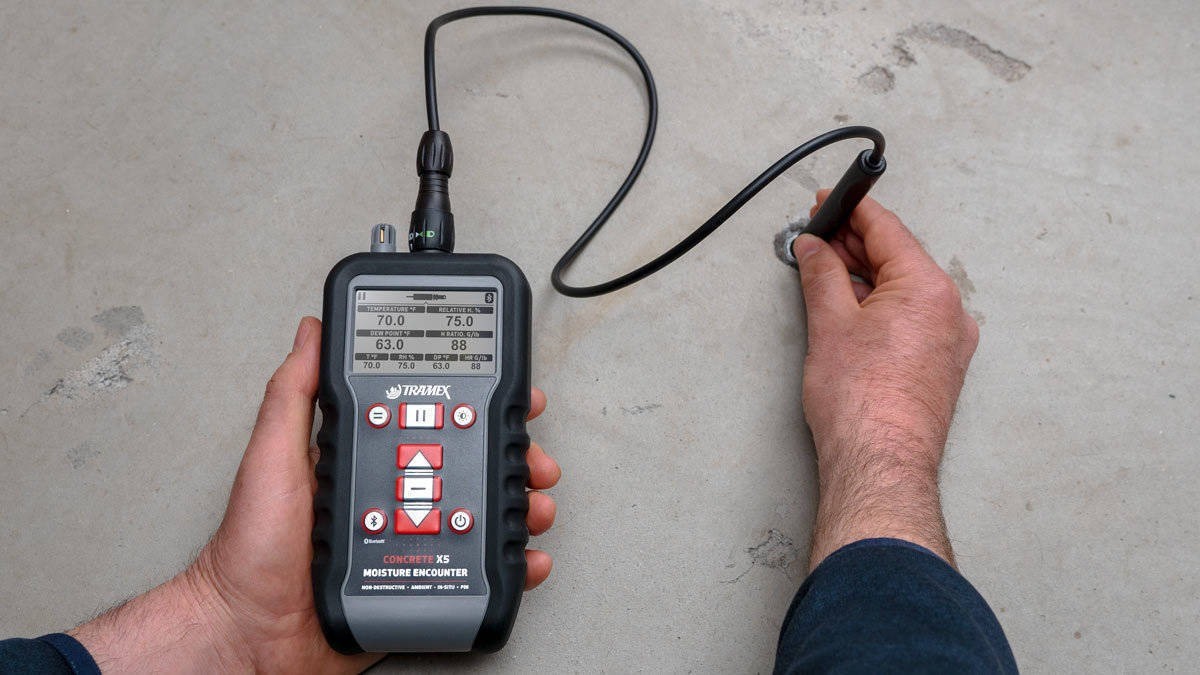Understanding Gloss
Gloss, in the context of polished concrete, refers to the level of shine or reflective quality exhibited by the surface of the concrete after it has been polished to a smooth and lustrous finish. It’s a measure of how much light is reflected off the surface, and it plays a significant role in determining the appearance and aesthetic quality of the polished concrete floor.
Glossiness is achieved through the polishing process, which involves progressively grinding and polishing the concrete with finer abrasive materials until the desired level of smoothness and shine is achieved. The higher the gloss level, the more reflective and mirror-like the surface will appear.
The gloss of polished concrete is typically measured in gloss units (GU) using a gloss meter. Gloss meters emit a specific angle of light onto the surface and measure the amount of light reflected back at that angle. The gloss value is then displayed on the gloss meter’s screen. Gloss levels can vary from low gloss (matte) to high gloss (glossy), and different environments or design preferences may call for different gloss levels.
Glossiness is an important factor in assessing the quality of polished concrete, as it affects the visual appeal of the surface and can also impact lighting conditions within a space. It’s essential for achieving the desired aesthetic and functional outcomes of a polished concrete flooring project.
Concrete Polishing Industry
When references are made about gloss meters and gloss readings specifically refer to specular gloss. Specular gloss is a term used to describe the mirror-like reflection of light off a surface at a specific angle. It’s the kind of gloss that you see when looking at a smooth, shiny surface, like polished metal, glass, or, in this case, polished concrete. Here’s a bit more technical detail about specular gloss:
Angle of Incidence and Angle of Reflection:
Specular gloss is measured by emitting a beam of light at a specific angle (usually 20, 60, or 85 degrees) onto the surface being measured. The light is then reflected off the surface at an angle equal to the angle of incidence. The gloss meter detects the amount of light reflected at this specific angle of reflection.
Uniform Reflectance:
Specular gloss is related to the mirror-like reflection of light. It occurs when the surface is extremely smooth and free from imperfections. The light rays are reflected in a regular and organized manner, creating a clear and distinct reflection.
Gloss Units (GU):
Specular gloss readings are expressed in gloss units (GU), which are standardized units used to quantify the gloss level of a surface. The gloss meter provides a numerical value in GU that corresponds to the intensity of the reflected light.
Surface Appearance:
Specular gloss is closely associated with the visual appearance of a surface. Higher gloss readings indicate a surface that reflects light well and has a high degree of shine and reflectivity.
Measurement Devices:
Gloss meters are designed to measure specular gloss accurately. They are calibrated to measure the intensity of light reflected at a specific angle, allowing them to provide objective and standardized gloss readings.
In the context of polished concrete, measuring specular gloss with a gloss meter is a common practice to quantify the level of shine achieved through the polishing process. Specular gloss readings provide valuable information about the visual quality of the polished concrete surface and help ensure that it meets the desired level of aesthetics and performance.





